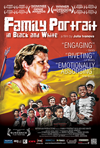Cultural Diversity and Ethnic Minority Psychology
Volume 18, Number 4 (October 2012)
pages 319-328
DOI: 10.1037/a0029729
Lisa S. Giamo
Department of Psychology
Simon Fraser University, Burnaby, British Columbia, Canada
Michael T. Schmitt, Associate Professor of Psychology
Simon Fraser University, Burnaby, British Columbia, Canada
H. Robert Outten
Department of Psychology
Simon Fraser University, Burnaby, British Columbia, Canada

Like other racial minority groups, multiracial people face discrimination as a function of their racial identity, and this discrimination represents a threat to psychological well-being. Following the Rejection-Identification Model (RIM; Branscombe, Schmitt, & Harvey, 1999), we argue that perceived discrimination will encourage multiracial people to identify more strongly with other multiracials, and that multiracial identification, in turn, fosters psychological well-being. Thus, multiracial identification is conceptualized as a coping response that reduces the overall costs of discrimination on well-being. This study is the first to test the RIM in a sample of multiracial people. Multiracial participants’ perceptions of discrimination were negatively related to life satisfaction. Consistent with the RIM, perceived discrimination was positively related to three aspects of multiracial group identification: stereotyping the self as similar to other multiracial people, perceiving people within the multiracial category as more homogenous, and expressing solidarity with the multiracial category. Self-stereotyping was the only aspect of group identification that mediated a positive relationship between perceived discrimination and life satisfaction, suggesting that multiracial identification’s protective properties rest in the fact that it provides an collective identity where one “fits.”
Read or purchase the article here.



